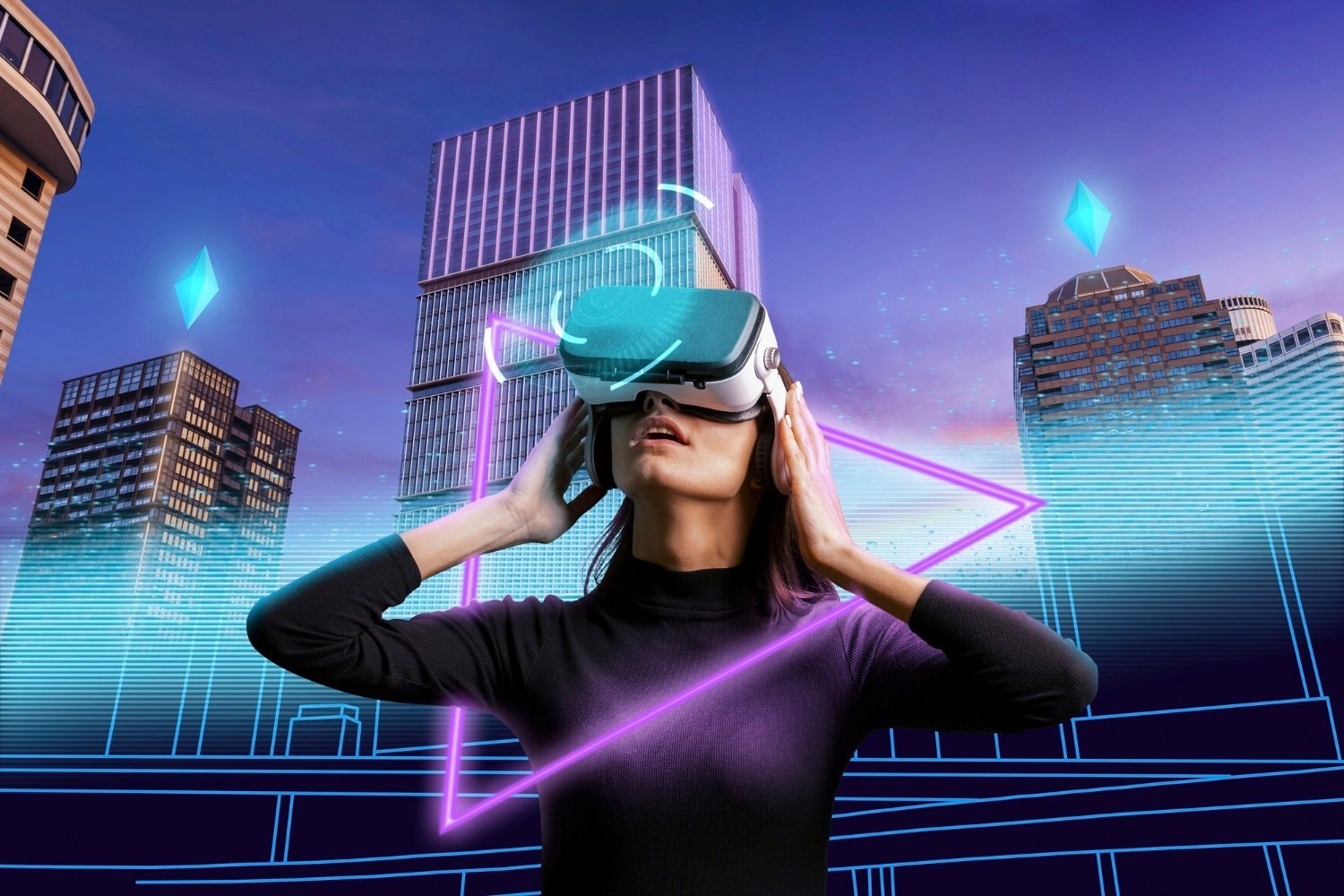Reshaping Retail: The Rise of Phygital Experiences
The retail world is changing drastically as physical and digital shopping have merged to create “phygital” commerce, which brings together the tactile experience of in-store purchases with the ease and creativity of online platforms.
In this blog, we’ll explore what’s driving this trend, the main factors behind its growth, and how businesses are using it to succeed in today’s competitive market.
Simplification of the Phygital Experience
Phygital experiences link the physical and digital worlds to create more interactive and brand-aligned customer shopping journeys. This approach aims to engage customers who enjoy seeing products firsthand while appreciating the convenience of online shopping.
Phygital: Key Characteristic Features
- Instant Accessibility: It combines the immediacy of product availability in stores with the velocity and convenience of digital tools.
- Interactive Experiences: Uses technologies like augmented reality (AR), virtual reality (VR), and interactive kiosks to make shopping fun and actively engaging.
- Personalized Experiences: This involves personalizing the shopping by applying real-time data and purchase history to meet unique needs for every customer.
Why Phygital is Winning Over Consumers
Consumers today prefer convenience, speed, and innovation. The hybrid model of phygital matches all these requirements since it provides a blend of the tactile feel of physical stores and the hassle-free efficiency of the digital platform.
Sensory Engagement Meets Digital Efficiency
Shoppers relish hands-on experiences, from trying on garments to testing devices, but are equally appreciative of the immediacy and simplicity of online retailing features that offer instant payment options and customized recommendations. All these have come together seamlessly with phygital.
Personalization at Scale
Through data analytics, retailers can build highly individualized customer journeys. Online behavior can inform in-store recommendations, while in-store experiences can calibrate digital recommendations. This perpetual cycle of feedback generates exclusivity and deepens customer loyalty.
Building Trust Through Transparency
Phygital systems can orchestrate inventory management to present stock levels in real-time. In this regard, customers will have the confidence that products they desire are available. Hence, the relationship is characterized by trust and reliability.
Key Trends Driving Phygital Commerce
Phygital commerce is booming, thanks to transformative trends that are revolutionizing the retail environment. Here are the key drivers of its adoption:
- Augmented Reality (AR) and Virtual Reality (VR): AR and VR are changing the way customers interact with products. AR enables a user to see furniture in his home or virtually try on clothes, while VR lets customers experience an immersive store from the comfort of their living rooms.
- Omnichannel Strategies: It is being done very smoothly by integrating online and offline shopping options. The customer can order online and pick up in store or shop in store and have the items delivered to their homes, making it easier and more convenient for them.
- Subscription Commerce: Subscription models bring predictability and easiness to consumers through categories such as meal kits, beauty products, and apparel. It involves digital tools enabling effortless customization and the craft of tailored experiences.
- AI-based Personalization: Artificial intelligence stands at the nucleus of highly personalized shopping experiences. From chatbots and recommendation engines to dynamic pricing systems, AI helps customers feel understood, valued, and satisfied.
- Contactless Technologies: Contactless solutions are the new standard for retailing, accelerated by the pandemic. Self Checkout kiosks, mobile payments, and curbside pickups are all geared toward safety, yet they do make the process easier.
How Brands Are Innovating with Phygital Strategies
Retailers across various industries are using phygital approaches to differentiate themselves. Here are some of the most interesting examples:
- Fashion Retail: Brands such as Zara and Nike are using AR mirrors and mobile apps to enhance the shopping experience. Customers can try on outfits, scan items in store for more colors, get styling recommendations, and read reviews all through their smartphones.
- Home Décor: IKEA’s AR app makes furniture shopping easy because the users can see what a virtual piece would look like in their homes. This can be helpful for matching dimensions and aesthetics, eliminating uncertainty and buyer’s remorse.
- Food and Beverage: Starbucks allows its loyalty program to integrate with location-based services through its mobile app. Users can order ahead, skip the line, and redeem offers that are tailored to their needs, creating a seamless fusion of digital convenience and in-store experience.
- Luxury Retail: Gucci and Louis Vuitton use VR showrooms to showcase their collections, providing immersive experiences for customers worldwide. These virtual spaces allow shoppers to explore new launches without visiting a physical store.
Challenges in Phygital Integration
While phygital strategies are of immense potential, they have challenges that the retailer must overcome to achieve success. Some of them include:
- Technology Infrastructure: Technology investment is needed in the adoption of phygital approaches. There is a need for robust platforms for managing data synchronization, inventory tracking, and real-time analytics effectively.
- Data Privacy Concerns: Personalization relies on gathering data on customers, though many consumers remain very wary of the handling of their data. The organizations need to have transparency and adequate security measures in place to win trust and then keep it.
- Operational Synergy: To deliver a seamless phygital experience, both online and offline operations need to be perfectly in harmony. Any glitches, like erroneous inventory updations, can hurt the customers’ trust and loyalty.
- Cost-ROI Tradeoff: The cost of AR/VR technologies, app development, and digital kiosks can be high upfront. Retailers need to carefully weigh these investments against potential long-term returns to ensure they remain financially viable.
Future Implications of Phygital Retail
The increasing influence of phygital commerce is shifting the boundaries to impact other industries like healthcare, education, and entertainment as it is revolutionizing how users interact with services.
- Applications in Healthcare: With the assistance of phygital technologies, patients can consult doctors through remote means and undergo in-person diagnostics and treatments. This hybrid model is enhancing access, convenience, and care delivery.
- Innovations in Education: AR and VR tools are changing the education landscape by making learning interactive and immersive. Students can engage with 3D models, virtual field trips, and collaboration tools to understand and retain more.
- Entertainment Evolution: Concerts, theme parks, and museums have started incorporating phygital elements to provide an immersive experience. Virtual tours, interactive exhibits, and live performances streamed worldwide enhance accessibility and depth of engagement.
Steps for Retailers to Embrace Phygital
To succeed in the changing phygital environment, retailers must undertake these strategic steps:
- Invest in AR/VR Technology: Pilot AR/VR tools to test their impact on customer engagement. Starting with smaller scale implementations minimizes risks and allows for fine tuning before broader rollouts.
- Focus on Omnichannel Excellence: Ensure that online and offline operations are well integrated. Uniform inventory systems, uniform pricing, and aligned promotions ensure a holistic experience for the customer across all touchpoints.
- Personalization at the Forefront: Utilize data to craft unique customer journeys. Customized product suggestions and personalized marketing campaigns increase loyalty and connection of customers with the brand.
- Data Security Ensured: Commit to strict data privacy practices as a way to build and maintain trust. Transparency on how data is used and strict adherence to regulations reassure customers of their security.





